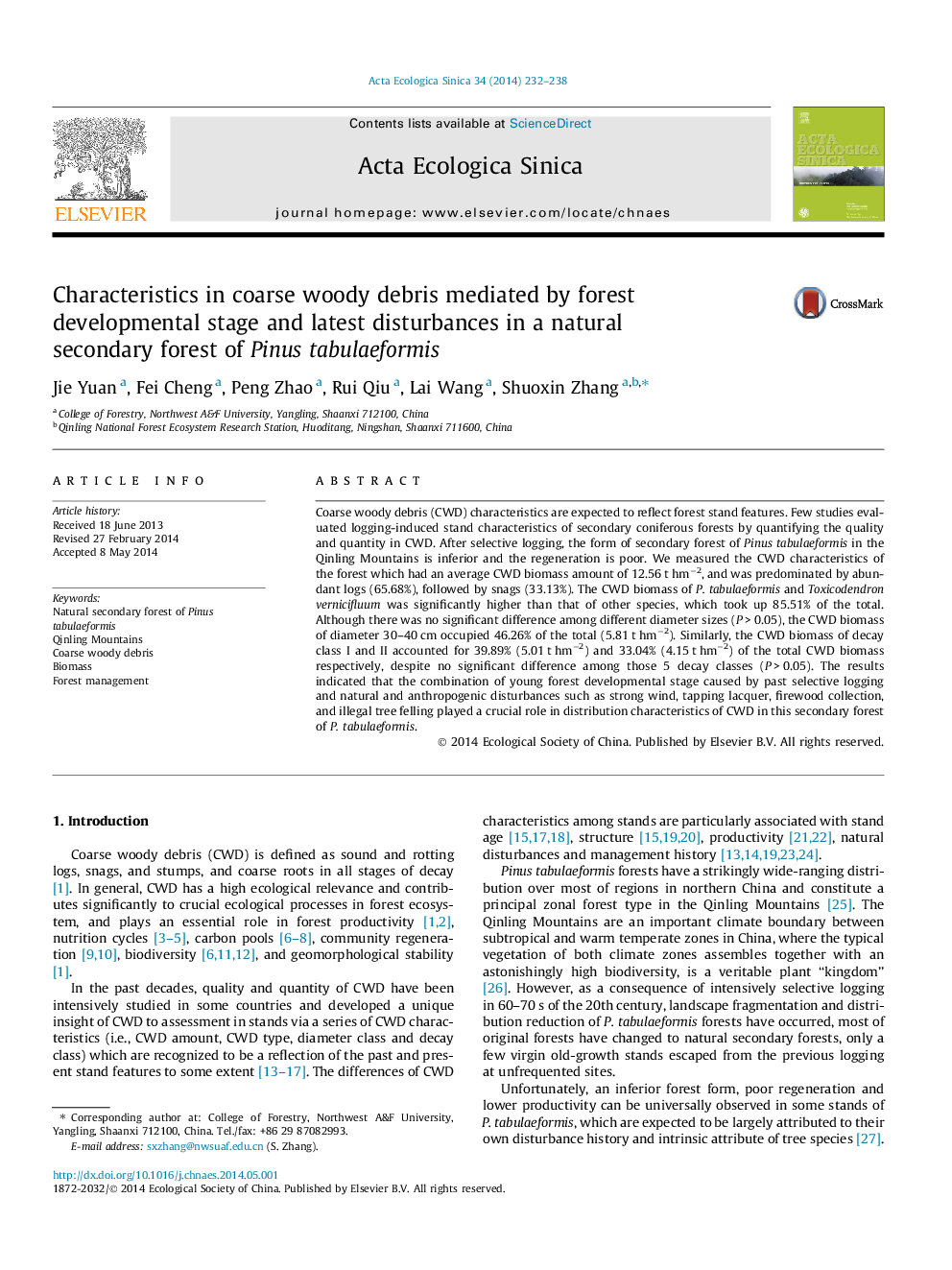| Article ID | Journal | Published Year | Pages | File Type |
|---|---|---|---|---|
| 10179844 | Acta Ecologica Sinica | 2014 | 7 Pages |
Abstract
Coarse woody debris (CWD) characteristics are expected to reflect forest stand features. Few studies evaluated logging-induced stand characteristics of secondary coniferous forests by quantifying the quality and quantity in CWD. After selective logging, the form of secondary forest of Pinus tabulaeformis in the Qinling Mountains is inferior and the regeneration is poor. We measured the CWD characteristics of the forest which had an average CWD biomass amount of 12.56 t hmâ2, and was predominated by abundant logs (65.68%), followed by snags (33.13%). The CWD biomass of P. tabulaeformis and Toxicodendron vernicifluum was significantly higher than that of other species, which took up 85.51% of the total. Although there was no significant difference among different diameter sizes (P > 0.05), the CWD biomass of diameter 30-40 cm occupied 46.26% of the total (5.81 t hmâ2). Similarly, the CWD biomass of decay class I and II accounted for 39.89% (5.01 t hmâ2) and 33.04% (4.15 t hmâ2) of the total CWD biomass respectively, despite no significant difference among those 5 decay classes (P > 0.05). The results indicated that the combination of young forest developmental stage caused by past selective logging and natural and anthropogenic disturbances such as strong wind, tapping lacquer, firewood collection, and illegal tree felling played a crucial role in distribution characteristics of CWD in this secondary forest of P. tabulaeformis.
Related Topics
Life Sciences
Agricultural and Biological Sciences
Ecology, Evolution, Behavior and Systematics
Authors
Jie Yuan, Fei Cheng, Peng Zhao, Rui Qiu, Lai Wang, Shuoxin Zhang,
